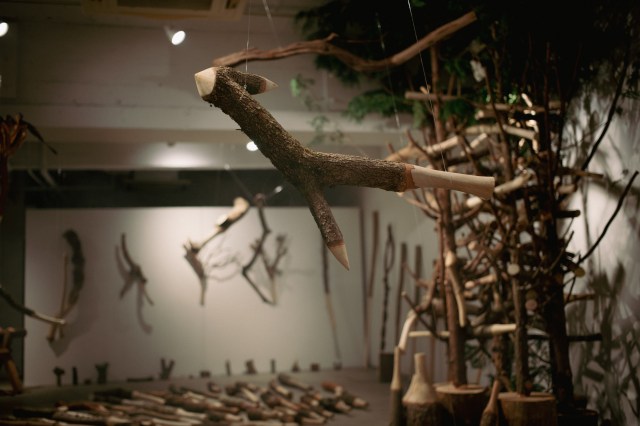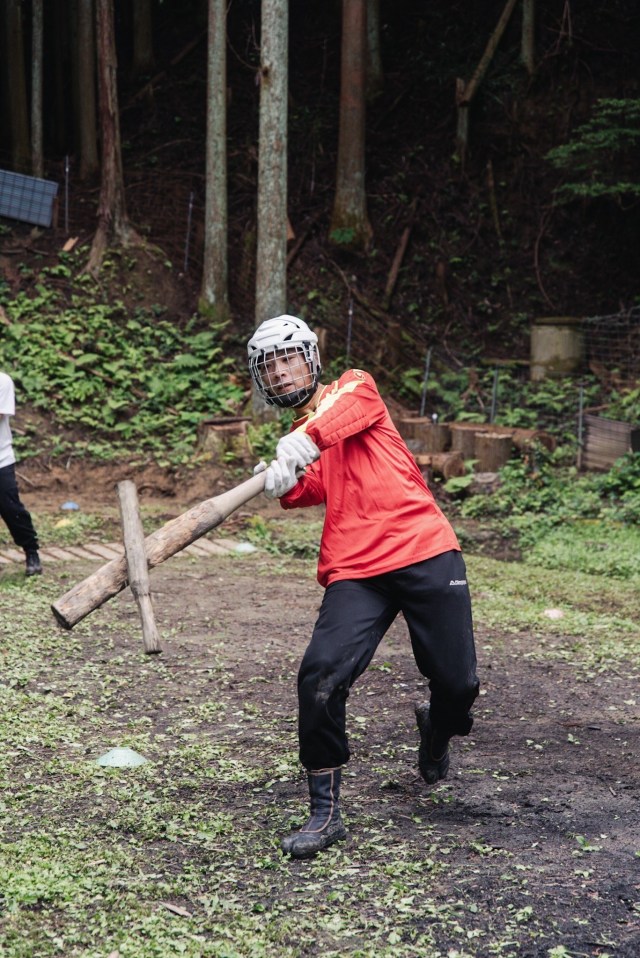
Clubs aren’t just for cavemen and goblins anymore!
When was the last time you’ve even thought about a big old wooden club, let alone held one?
Granted there isn’t as much use for a heavy lump of wood as there used to be, but after literally thousands of years of humans and clubs going hand in hand, it feels a little sad that we turned our back on them so abruptly. That is something that the All Japan Club Association is trying to change by reminding us why we fell in love with clubs in the first place.
▼ All Japan Club Association President Shohei Azuma presenting a club to a future clubber
棍棒協会会長から棍棒を授与されるみちひと坊や。棍棒のような子になれと願いを込めて笑 pic.twitter.com/k9CdvdZbq4
— 汽水空港 (@kisuikuko) May 16, 2022
The roots of the All Japan Club Association, or Zen Nihon Konbo Kyokai (ZNKK) in Japanese, can be traced back to Shohei Azuma. Born in Osaka Prefecture, Azuma moved to neighboring Nara Prefecture in 2015 to pursue a career in farming. He took up residence in Uda City where, like in many rural parts of Japan, the population was rapidly aging and declining.
With this decline in human activity many forests in the area have become overgrown, and Azuma decided to help out with maintenance by joining a project to replace the artificially homogenous rows of sugi trees with more diverse species similar to what the forests had before the influence of humans.
In 2021, while working on the project he came across a piece of wood that was rather big but also too small to make any furniture with. Not knowing what to do with it, he carved it into a club and gave it to a friend as a gag gift. It turned out to be a surprise hit and this outbreak of club-fever quickly blossomed into the All Japan Club Association.
Tapping into the zeitgeist of people wanting to post pictures of them doing unique things to their social media profiles, clubbing was an almost overnight success. In February, an event was held in Osaka City that had around 200 clubs on display and also allowed visitors to swing them at another piece of wood to break it.
▼ A report from the Osaka club exhibition
The event was a hit for two reasons: First, it reminded us that, unlike sleek modern replacements such as baseball bats or truncheons, clubs are made from a solid piece of natural wood so each one is unique and retains the charm of the specific tree from which it came. It was likely for that reason that 40 clubs were purchased to be used either as tools or pieces of home décor. During the four-day event, periodic workshops were also held where guests were given the chance to make their own clubs.
Secondly, it probably comes as no surprise that bashing stuff with a club can do wonders for stress. This stress release is heightened by the warmth of the wood and feeling of reconnecting with nature. In fact, the club swinging became so popular that they ended up having to turn people away.
▼ “As we tweeted earlier, the test hitting section ended already because all the logs have been broken.”
また、先にツイートしたとおり、試し殴りコーナーは丸太が全て折れてしまったため既に終了しております。 #大棍棒展 pic.twitter.com/YYhLxvPrdl
— ZNKK全日本棍棒協会 (@greatkonbou) February 19, 2022
In September, at a special pop-up store in the Shibuya Tokyu Hands store in Tokyo clubs were sold for prices ranging from 5,000 to 70,000 yen (US$34-US$483) and in sizes ranging from 30 centimeters to two meters (1-6.5 feet). The tools used the make them were also on display.
▼ The store was called Club Market
やってます #棍棒市場
— ZNKK全日本棍棒協会 (@greatkonbou) September 17, 2022
すでに6本お買上げいただきましたああああありがとうございまああああああす!#棍棒 pic.twitter.com/eQQcPLU9iN
Despite all this popularity, Azuma and the All Japan Club Association know that social media-driven trends are fleeting and something more permanent would be needed, so they’ve also been hard at word creating konbo tobashi (club flying) a sport centered entirely on clubs.
In konbo tobashi, one player catapults a club into the air by whacking it with another club, earning points based on the distance it travels. Meanwhile, players on the opposing team can attempt to whack the flying club back with their own clubs, thus reducing the distance it flew.
ちなみに大宇陀神殴仏sは「おおうだかみなぐりぶっつ」と読みます pic.twitter.com/SwnsVI9r7x
— ZNKK全日本棍棒協会 (@greatkonbou) June 16, 2022
Although simple in principle, a deceptive complexity lies in the clubs themselves given that no two are alike and so they can have unpredictable curves, weights, and textures. Moreover, the clubs would be made from trees indigenous to the areas where teams from all over Japan originate, making them just that much more diverse.

On 7 October, the 0th All Japan Kondo Tobashi Championship: ZNNK X Cup was held. The “X” refers to two crossed clubs, and given the fact that the All Japan Club Association is hardly a year old and already developed an original sport, this is considered something of a trial event, hence the “0th” designation.
いよいよ近づいてきた #ZNKKXCUP 第0回全日本棍棒飛ばし選手権大会。
— ZNKK全日本棍棒協会 (@greatkonbou) September 24, 2022
10月7日(金)=棍棒の日、世界は終わる。そしてKONBOUの支配する世界が新たに始まるのであるボッコオオオオオオン︎
︎
実にこれはホモサピエンス20万年ぶりの快挙であり、諸君は諸手を挙げて喝采することとなる #棍棒飛ばし pic.twitter.com/BQKjyGYpcY
Although there’s a lot of fun and humor to the All Japan Club Association, it’s all in the name of raising awareness to appreciate and protect Japan’s forests by maintaining them and improving the diversity of tree species in them. For that reason, and the fact that hitting stuff is really fun, there really is no reason that clubs can’t make a big comeback in Japan. Maybe one day we’ll even see club clubs in schools.
Source: All Japan Club Association, PR Times, Mainichi Shimbun, Netlab, Minkei
Images: PR Times
● Want to hear about SoraNews24’s latest articles as soon as they’re published? Follow us on Facebook and Twitter!

No hay comentarios:
Publicar un comentario